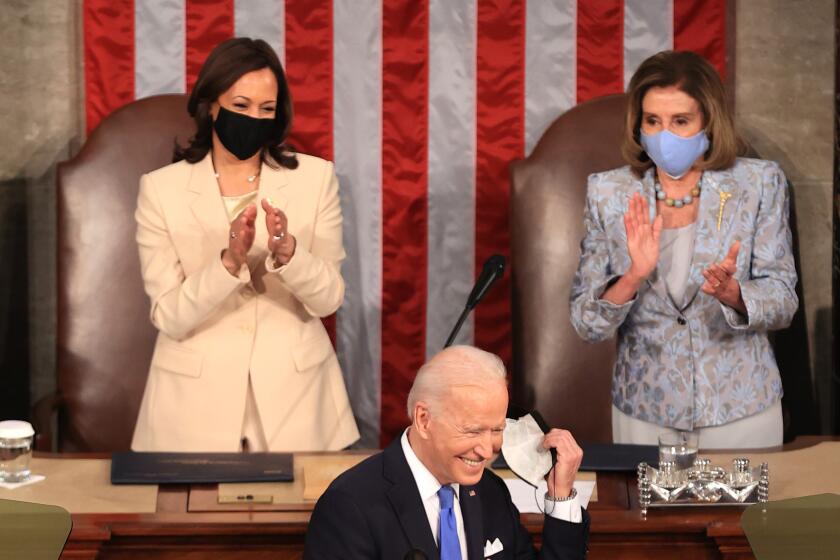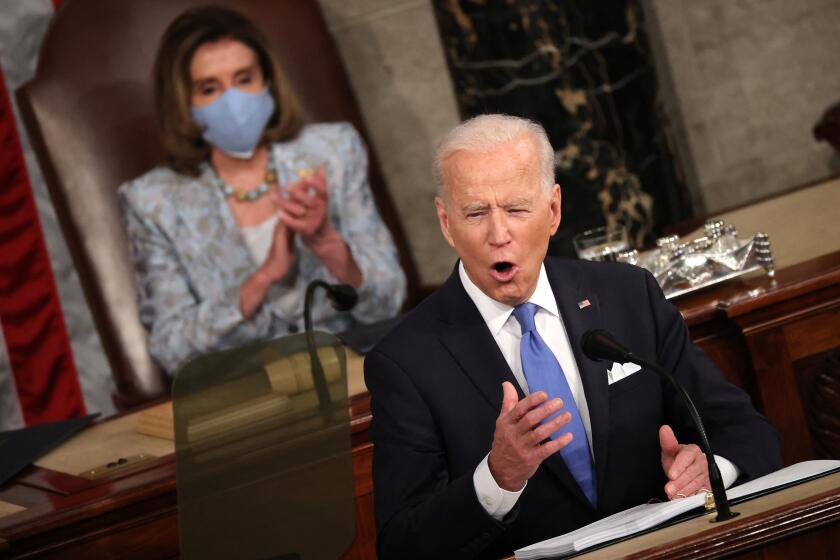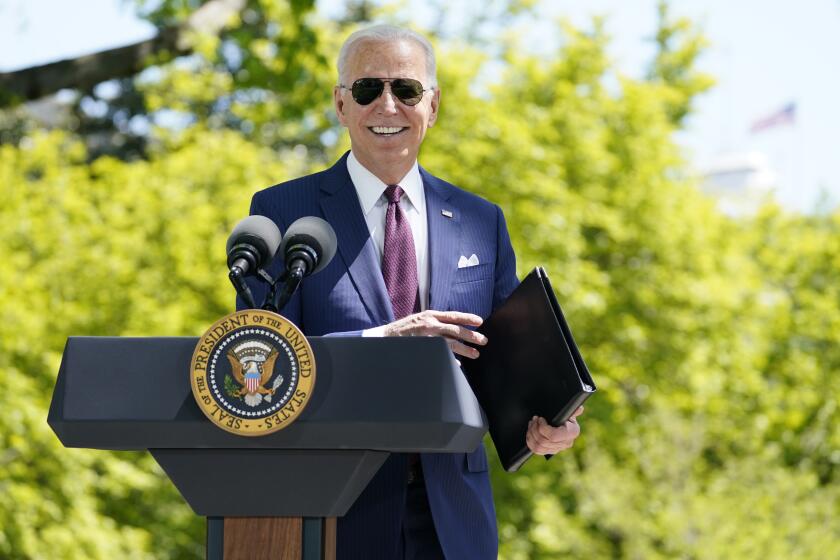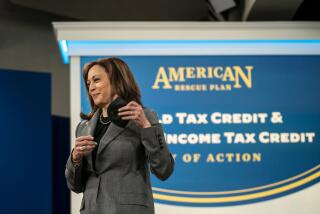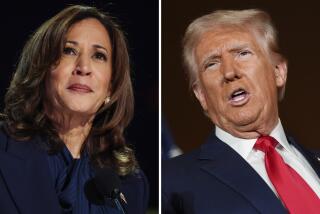Biden’s proposed capital gains tax hike targets wealthy investors. An explainer

- Share via
NEW YORK — After massive U.S. government spending helped send the stock market back to record heights, with even more potentially on the way, the bill may be coming due for the nation’s wealthiest investors.
President Biden is proposing to nearly double the tax rate the highest-earning Americans pay on profits made from stocks and other investments. It would force millionaires to pay similar tax rates on their investment gains to what upper-middle-class households pay on their salaries, after years of enjoying lower rates.
It’s part of Biden’s efforts to tax wealthy people and corporations to pay for infrastructure investments and programs aimed at helping the broader economy. The most recent proposals focus on lower-income families and children. They include universal preschool for 3-year-olds, two years of free community college and the extension of tax cuts for lower- and middle-income families.
Even though the possibility of higher capital-gains tax rates has been telegraphed for a long time, reports of its pending unveiling shook up the stock market, with the S&P 500 falling to a nearly 1% loss on Thursday. Stocks have since set more records, but the knee-jerk reaction shows how much investors care about potential changes in tax rates.
What is a capital gains tax?
The capital gains tax must be paid on profits made from an investment, such as a stock or a Bitcoin. But it only takes effect after a sale locks in the gain. So if you bought a share of Tesla at $200 early last year and are sitting on a profit of more than $500, you won’t owe anything unless you sell.
Wealthy Americans know the capital gains tax is their biggest loophole — and they won’t give it up easily.
If you do sell, and you are one of the highest-earning Americans, current law says you’d pay a 23.8% tax on a $500 profit, or $119. That includes a 20% tax on investments held for more than a year, known as a “long-term capital gains” tax. It also includes an extra 3.8% tax on investments for high earners that’s been around since 2013 to help pay for the Affordable Care Act.
What is Biden looking to change?
Biden wants to raise the tax rate on long-term capital gains for Americans who make more than $1 million in a year. Their rate would rise to 39.6% from 20%. With the additional 3.8% tax, the highest-earning Americans could be paying a total tax rate of 43.4% on profits from long-term investments.
That would be the highest top rate since the 1920s, according to the Tax Foundation, and the proposal could make the rate on investment gains similar to the rate on income made from working.
Biden addresses a joint session of Congress, pared down by pandemic precautions, in a prime-time appearance Wednesday to promote a bold domestic agenda.
The top tax rate that workers pay on salaries and wages now is 37%. Biden wants to move the top tax rate on work income up to 39.6%, which is where it was before the 2017 tax cuts.
One reason tax rates have been lower on long-term capital gains than for regular work is that supporters say it encourages long-term investment and helps the economy.
Are there other related changes?
Biden is asking Congress to wipe out a preferential tax treatment for private-equity executives and other money managers earning millions of dollars annually, something referred to as “carried interest.”
For years they’ve been paying only 23.8% in federal tax because much of their compensation was treated as a long-term capital gain. The industry says that encourages private-equity firms to take risks as entrepreneurs and to continue investing in companies.
Because of it, many wealthy private-equity managers pay a lower rate than what households with married people filing their taxes jointly were paying on income above $171,050.
President Biden, in his address to Congress, frames a vast expansion of government as crucial to democracy’s survival.
Besides targeting “carried interest,” Biden is also asking Congress for more funding for the IRS so it can be more aggressive in auditing wealthy Americans, among other proposals.
How big a deal are all the changes?
Altogether, the White House says the tax law changes focusing on higher-earning Americans would raise about $1.5 trillion across the decade. That would be in addition to the more than $2 trillion that the White House is looking to raise over the next 15 years from changes to corporate taxes.
Besides helping to pay for the programs Biden is proposing, the White House says its proposals for capital gains rates and other changes will eliminate tax laws “that reward wealth over work” and hopefully “rein in the ways that the tax code widens racial disparities in income and wealth.”
Republicans in the Senate — where Biden’s Democratic party holds the slimmest of majorities — have already offered resistance to Biden’s proposals for big increases in spending and taxes for the wealthiest households.
But the change in the tax would hit very few people?
Only the top 0.3% of taxpayers, or about 500,000 households across the country, would be affected by the proposed rise in long-term capital gains rates, according to Brian Deese, director of the White House National Economic Council.
Then why does the market care so much?
The wealthiest households are very, very rich, and own a lot of stock.
The wealthiest U.S. households are collectively sitting on $1 trillion to $1.5 trillion in gains on stocks that they will have to pay taxes on whenever they sell, according to a Goldman Sachs analysis of data from the Federal Reserve. That’s roughly 3% of the entire U.S. stock market’s total value.
The concerns are that those rich investors will dump their stocks before the rate is increased, and that would-be investors would be discouraged from buying stocks because of the higher rate.
As a candidate, Joe Biden made lots of promises for his first 100 days as president. He’s kept many, but not all.
Are those concerns valid?
The last time Washington raised capital-gains tax rates in 2013, the wealthiest households sold 1% of their stock holdings in the three months before the new rate went into effect, Goldman Sachs strategists say.
However, the selling was short-lived and the S&P 500 rose 30% for the year.
Stocks tend to go up over the long term. So, a sale today would mean an investor would be losing out on all the gains that may be coming in future years.
Also, many on Wall Street are expecting Democrats and Republicans to try for a compromise rate that’s lower than 43.4%.
More to Read
Inside the business of entertainment
The Wide Shot brings you news, analysis and insights on everything from streaming wars to production — and what it all means for the future.
You may occasionally receive promotional content from the Los Angeles Times.

